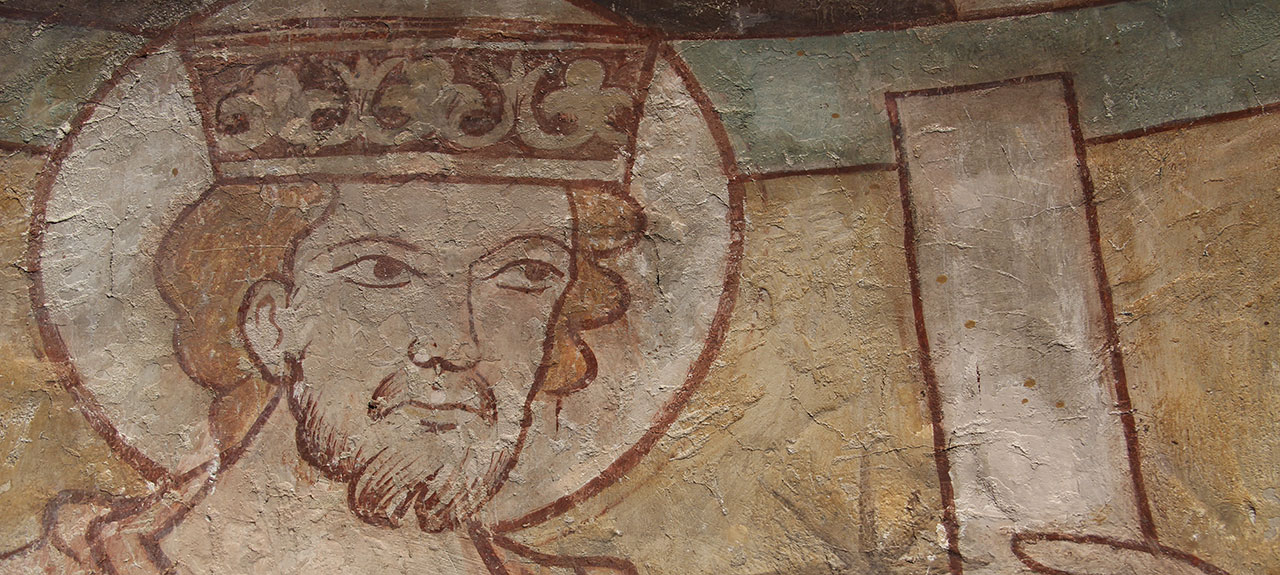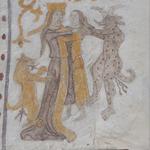Bad Sassendorf-Weslarn
Protestant church, formerly St. Urban, Kirchkamp 1
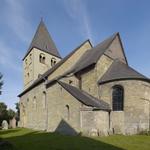
Bad Sassendorf-Weslarn, Protestant church, formerly St. Urban, exterior view from the southeast. Photo: LWL/Dülberg.
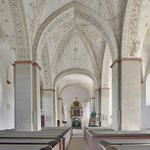
Bad Sassendorf-Weslarn, Protestant church, formerly St. Urban, interior view facing the east. Photo: LWL/Dülberg.
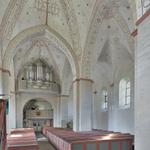
Bad Sassendorf-Weslarn, Protestant church, formerly St. Urban, interior view facing the east. Photo: LWL/Dülberg.
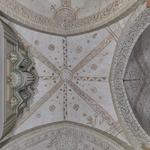
Bad Sassendorf-Weslarn, Protestant church, formerly St. Urban, central nave, western vault with vault paintings and mythical creatures. Photo: LWL/Dülberg.
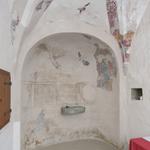
Bad Sassendorf-Weslarn, Protestant church, formerly St. Urban, former chapel (vestry), interior view facing southeast. Photo: LWL/Dülberg.
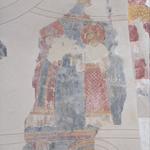
Bad Sassendorf-Weslarn, Protestant church, formerly St. Urban, former chapel (vestry), apsis, wall painting, fragment with saints. Photo: LWL/Dülberg.
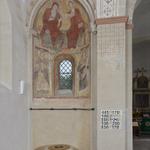
Bad Sassendorf-Weslarn, Protestant church, formerly St. Urban, north apsis and adjoining pier, wall painting. Photo: LWL/Dülberg.
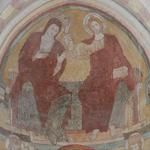
Bad Sassendorf-Weslarn, Protestant church, formerly St. Urban, north apsis, calotte, wall painting, Coronation of the Virgin, detail. Photo: LWL/Dülberg.
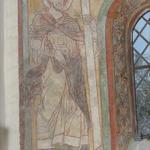
Sassendorf-Weslarn, Protestant church, formerly St. Urban, north apsis, wall painting, King David, detail. Photo: LWL/Dülberg.
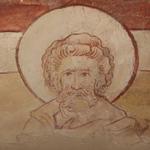
Sassendorf-Weslarn, Protestant church, formerly St. Urban, north apsis, wall painting, St. Peter. LWL/Heiling.
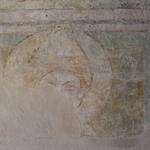
Bad Sassendorf-Weslarn, Protestant church, formerly St. Urban, northeast pier, wall painting, Sanctified Bishop, section. Photo: LWL/Heiling.
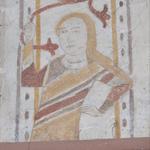
Bad Sassendorf-Weslarn, Protestant church, formerly St. Urban, central nave, east bay, southern diaphragm arch, west side, wall painting, figure in tendrils, detail. Photo: LWL/Dülberg.
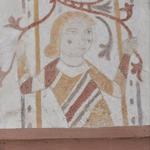
Bad Sassendorf-Weslarn, Protestant church, formerly St. Urban, central nave, east bay, southern diaphragm arch, east side, wall painting, figure in tendrils, detail. Photo: LWL/Dülberg.
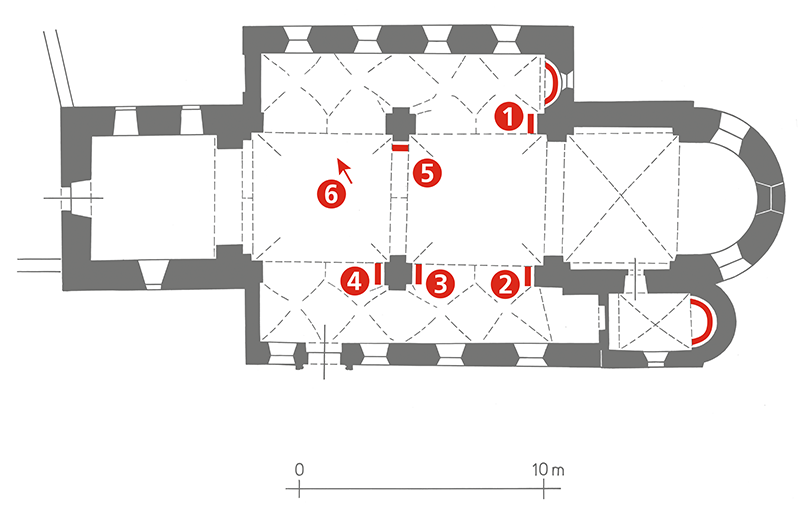
Bad Sassendorf-Weslarn, Protestant church, formerly St. Urban, ground plan (The mappings (German version) can be opened by clicking on the red markings).
Building structure
Hall church comprising two bays with west tower, quadratic choir and semi-circular apsis. Apsis niche in the east wall of the northern nave. To the south of the choir a chapel with apsis, now the vestry.
Building data
Tower, choir and former chapel, end of 12th century (around 1160/70), nave mid-13th century.
Romanesque polychrome architectural decorations
Former chapel: 1973-76 exposure and restoration.
Of the piers of the painted arcature around the only arched window of the room in the south wall the remains of a capital and a part of the shaft are still preserved. The white groins of the vault were emphasised in a negative pattern by the accompanying ribbons of tendril ornaments, which were underlaid in red in the western and eastern dome and grey in the north and south. On these coloured ribbons, which raised from marbled spandrels stand white drawn ornaments: Wave tendrils filled with palmettes, cruciform flowers and palmettes in medallions. These closely related motifs are found in the Petri church of Soest. In addition, there are medallions on whitewash with red feathered palmettes, which result in a cross motif found central in the vault caps. Remnants of this decor are recognizable in the vaults of the chapel of Weslarn.
Church nave: In 1898 revealed for the first time and in 1900 overpainted almost true to the original, 1955-58 again revealed and restored.
In the central nave vaults – different to most of the polychrome architectural decorations examined – the arris themselves are pictorially emphasised. For instance, in the west bay the vault arris, that evolve from ornamentally decorated starting points of the spandrels, are ornamented with tendrils, the ribbon shapes of which are complemented by other ornamental bands arising from the arch apexes so that eight rays are created. This design dates back as far as the motifs of the middle bands with staggered triangles that form a zigzag pattern, to the west bay of the Hohnekirche in Soest. The eastern vault, on the other hand, is only decorated with four bands emphasising the arris and with four tree-of-life motifs on the caps in between. As usual, beside the tree-of-life motifs there are two bands rising up at the sides of the arris with varying decorations of tendrils, leaves and blossoms, that, however, accompany an arris emphasised by small blossoms and dots. The eastern cap has only been painted in a simple manner during the last restoration. Also the colour scheme of the choir and its plaster support were given up at that time.
In the vaults of the lateral naves the bands, as in the central nave, end in a painted key stone in the form of a medallion that in each case is filled out differently. The small stars and cross motifs strewn in the caps in the centres of the lunettes form part of the general motif repertoire.
Figurative Romanesque wall painting
Former chapel, vestry, apsis: Fragment of two female saints and a tonsured male saint (medallion), as accompanying figures to a reconstructing Christ in Majesty or rather Deesis.
Church nave, north apsis: Coronation of Mary with King David (left) and King Solomon (right), below them St. Peter and St. Paul (only the heads have been preserved).
Church nave, northeast pier: Sanctified Bishop, possibly St. Urban?
Church nave, arches and west vault, integrated in the polychrome architectural decorations: two figures in tendrils, Vice of Unchastity, Samson on the Lion, fable figure.
Crafting technique/painting technique
Former chapel (vestry), painted in the form of a fresco on single-layered plaster. The preliminary drawing of the figures and partially also the application on the inner surfaces were carried out with yellow ochre, on this in the faces dark mixed shadows and severe graphically applied white highlights. Black and brown contour drawing, gilding of the halos of the two female saints. Robes with ornamental borders with painted precious stones. For blue tones (background, precious stones) use of the valuable pigment lapis lazuli, next to that vermilion, iron oxide red, copper green.
North apsis, painting on lime wash on single-layered and strongly smoothened plaster. The preliminary drawing and parts of the inner paints have been applied onto the fresh lime wash. Red preparatory drawing of the faces and robes that remains visible as a contour. Remains of chrysographies that are developed here not as lights but as comb-like shadows (poss. oxidised vermilion). The halos of Christ and Mary and the Book of Christ are emphasised by carved plaster modulations that were scratched out of the dry plaster with a spoon shaped spatula after application of the modulations and consequently gilded. The throne and the halos of the other figures were also gilded, but without plastic emphasis. In the background of the picture there is evidence of the remains of azurite (blue pigment) on the ochre-coloured preliminary drawing.
North east pier, figure of a Bishop, fresco painting on thin, strongly smoothened plaster. Red preliminary drawing, remains of black contours, formerly a blue background, part of the frame is copper green.
Church nave, figurative elements of the polychrome architectural decorations, painted on a lime wash that lies on the relatively thin and only irregularly smoothened vault plaster that is characterised by coarse grain aggregates. Some incisions into the plaster that must have still been damp from the building process. Mainly earth tones were used, warm grey for the contours, yellow ochre, iron oxide red and again grey for the filling colours.
Conservation history
Former chapel (vestry), 1973-76 revealed and restored. The wall painting fragments have not been retouched and therefore are particularly expressive.
North apsis 1898 revealed, not painted over. Restoration 1952/53. Presumably the nuances of the uppermost, more badly bound paint layers were already lost upon exposure in 1898. The overall colour impression of the north apsis has changed today altogether. Of the formerly bright blue background only the ochre-coloured underpainting has remained. David’s coat and the Solomon’s robe, today heavily browned, were originally brilliant orangey-red. During restoration the missing areas have been completed within the original contours in a bright shade of red. However, in the robes the lines definitely follow the original. Only in the faces of the crowning Christ and the Kings, have the characteristic style of the lines and therefore the style been changed. The head of Mary has been replaced. Its gilded halo, also the crucifix gloriole of Christ, originally ornamented with radially arranged, oval dents in the plaster, make the gold reflect even more intensely.
The figure of the Bishop on the northeast pier has been reduced due to loss of layers of paint, and here too the blue background is missing.
The figures integrated in the polychrome architectural decorations of the church nave have been supplemented in some parts, individual contours have been drawn over and inner areas glazed over.
Description and iconography
Former chapel, vestry, apse: On the largest fragment of painting in the southern part of the calotte two standing female saints have been preserved. They are wearing crowns, the outer figure also has a lily as an attribute. The painting fragment extends to the wall zone below it and there the head of a tonsured saint can be seen in a medallion. On the ochre-coloured dividing band between the medallion frieze and the calotte a fragment of an inscription indicates the relics that were formerly located in the altar. Christ on the throne can be identified on the basis of the remains of the mandorla and the rainbow in combination with the remnants of evangelist symbols. Of these evangelist symbols the top right-hand animal, presumably the Lion of St. Mark, can be recognized by its torso and wings. In the northern section of the calotte, above the medallion frieze there is a fragment of plaster with red polychromy that probably – analogous with the two figures of saints on the south wall - originates from the robe of a further saint. Thus, in the former chapel, there is not John the Baptist and a church patron saint, as one would normally find, but two unknown female saints to the left-hand of Christ, the right-hand one depicted with a lily as a symbol of a virgin. Also the arrangement of the evangelist symbols, with the lion at the top right does not correspond to the well-known pattern of the Christ in Majesty or rather the Deesis.
Church nave, north apse: In the calotte the Coronation of Mary is depicted in larger-than-life figures. Christ, turned frontally to the observer, is placing the crown on the head of his Mother Mary with his right hand, whereby she, slightly turned towards him, has lifted both arms in reverence. Below this on both sides of the window there are two life-size, strongly animated figures of kings with tituli, unfortunately without any inscription preserved. The left-hand figure carries a lyre as an attribute and can therefore be identified as King David. His counterpart on the opposite side, without any attribute, is probably his son, King Solomon. Clearly reduced in scale and only preserved up to the shoulders, there are two further saints below the Kings. They can be identified by their characteristic hairstyles and types of head and the sword of the right-hand figure as the Princes of the Apostles, Peter and Paul.
Church nave, northeast pier: Of the face drawing of the Holy Bishop the red contours are still preserved, an indent on a level with the left ear indicates a rather haggard, oval face. Remains of the red pupil reveal his steadfast gaze at the observer. The light mitre appears to be ornamented with a border. Under this blond hair protrudes but it does not overlay the contour of the face. Small areas of the light-coloured robe on his left shoulder are still recognisable.
It is possible that relics of St. Urban of Cologne came to Weslarn around 1250 for the dedication of the new building via the collegiate chapter St. Patroclus in Soest. Then the presumed identification of the bishop as St. Urban near to the altar would be given an historic substantiation.
Church nave, arches and western vault, integrated in the polychrome architectural decorations: Above the impost blocks in the southern diaphragm arch of the east vault the scrolling vine ornamentation begins with two entwined figures who, as flexible half-figures, are holding the ends of the tendrils. Above the south-eastern pier the slender figure with striped, close-fitting robe is resting its left hand pertly on its hip and appears to hold with its right hand the tendril that is creeping over the frame, as if it is wanting to go its own way. The entwined figure to the west is pulling the tendrils apart like a curtain in order to look through them. Both the figures and the tendrils extend in these places beyond the framing ribbons and demonstrate an easy-going and playful attitude towards the repertoire of shapes. Both figures have blond hair, the eastern ones having even very long hair, and have draped dark ribbons around their necks like a necklace, which indicates that these are indeed female figures. On the middle pier above the impost block a slightly crude representation of vice is positioned that is unmistakable for people entering from the main portal on the south side. In the centre is a woman with long, flowing robe and a rigid headdress who is embracing a smaller man and pulling him towards her. The two monsters on each side of her who are driving the couple together leave no doubt as to the profligacy of the activity , making the beasts smell from every bodily orifice as is shown in small bundles of lines.
When regarding the original parts of the figurative representation on the north side of the transverse arch of the central nave, one will notice that, even including the gesture of the arm and the sitting position of the figure on the beast, probably a lion – as the physiognomy in the preserved parts suggests. This corresponds to the well-known representations of the extremely strong, long-haired Samson who slays the lion.
On the northern cap of the western central nave vault there are the remains of two mythical creatures. The better preserved one on the edge of the cap has a light-coloured, scaly body with a fishtail, two paws on the strong, hairy front legs and a light-coloured head similar to that of a panther, with tongue stuck out. To the right of this mixed creature two bird’s claws are preserved, one with red contours, one ochre-coloured. Above the outward bending end of the tendril that was painted here but of which there is no longer any evidence, there is still a small remainder of the creature, probably of its head. On an archive photo the body can be roughly made out. It is probably a bird’s body that was covered either with scales or with feathers.
Art-historical classification
In the church in Weslarn four varying original painting phases originating from the construction period of the building can be differentiated:
The ornamental and figurative painting of the former chapel (vestry) can be regarded as an integral part of the first building phase of the church around 1160/70.
In the interior of the church there are three wall paintings, dating from the time of construction of the nave around 1250 and executed by various painters:
- the polychrome architectural decorations with figures inserted in the vaults,
- the fragment of a bishop in fresco technique on the northern pier of the central nave,
- the north apse with the Coronation of Mary and with saints.
In the small room of the former chapel (vestry), the elaborate painted depiction of a burial ground that was presumably commissioned by a Soest clergyman, can be seen, in close-up, at least in fragments. As far as the motifs and the quality of the painting are concerned, the rich ornamentation of the vault is closely linked to the painting of St. Peter’s Church in Soest (around 1160/70). Works of Hildesheim book illustration from the same period can be referred to for appropriate comparison with the figurative drawings in the apse. It is possible that two differently talented painters were engaged, one for the faces and hands as well as the inscription, a second for the less precisely depicted robes. The wall painting could have been created by a Soest workshop that was in possession of patterns from Hildesheim or was strongly influenced by the Hildesheim painters. Furthermore, stylistic relationships can be recognised with the figurative wall paintings in Soest-Ostönnen and Bochum-Stiepel.
The figurative depictions in the north apse can be very closely related to the paintings in the main and south apses of St. Blaise Church in Balve as far as style and painting technique are concerned, so that here one can probably perceive the same painting studio, possibly with only a small time lag which could explain the slight differences in the robes. Both the composition with the intertwined upper registers and the hierarchy of the types of figures and the painting elaboration indicate in both cases an extremely superior handling of painting technique and style. There are further correlations with the figures in the stationary motifs, the fall of the folds and other details right through to the drawing layout of the faces.
One can see an individual style and special painting technique in the depiction of a bishop on the north-eastern pier of the central nave. The figures of St. Nicholas‘ Chapel in Soest can be regarded as the most closely related.
In many individual motifs and the overall character, the polychrome architectural decorations of the church nave show great similarly with the Hohnekirche in Soest which indicates that the same decorative artists could have worked on both churches. The entwined figures and depictions of virtue and vice integrated in the ornaments of the vault are created by decorative painters and are artistically of inferior quality to the figures of the apse and the neighbouring bishop. However, the integration of the figures in the polychrome architectural decorations conveys a confident feeling for rhythm and composition with a partly playful, partly drastic, more placatively decorative presentation format.
Dating
Former chapel around 1160/70, church nave and north apse around 1250.

